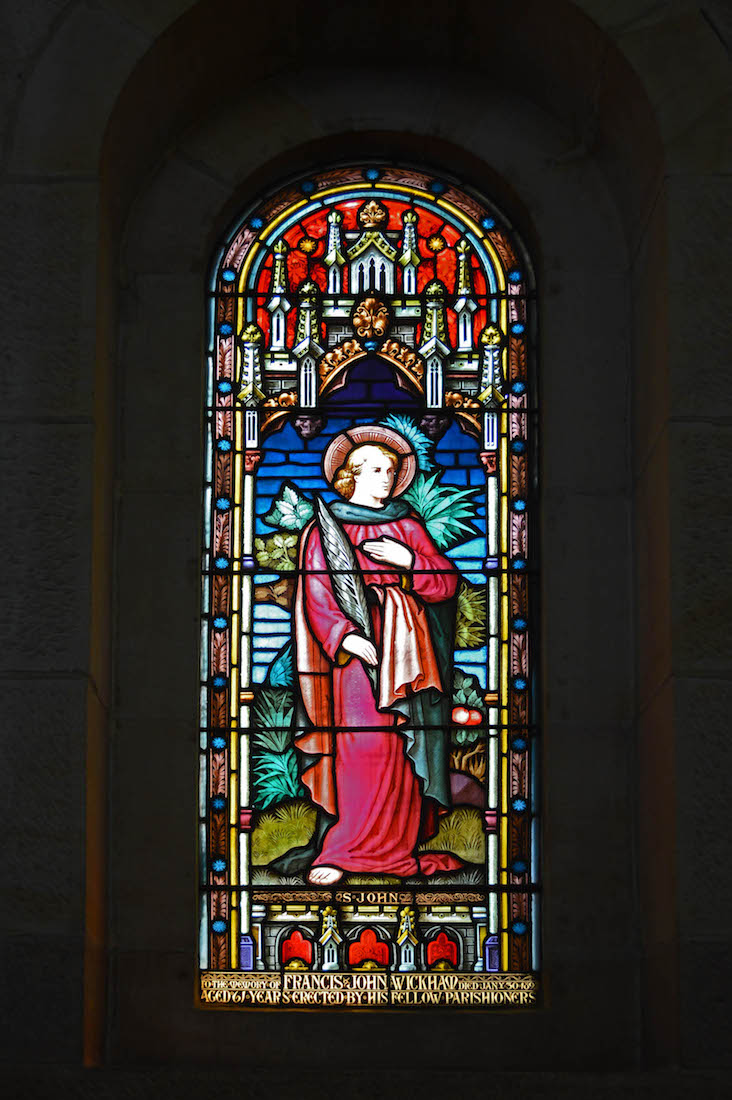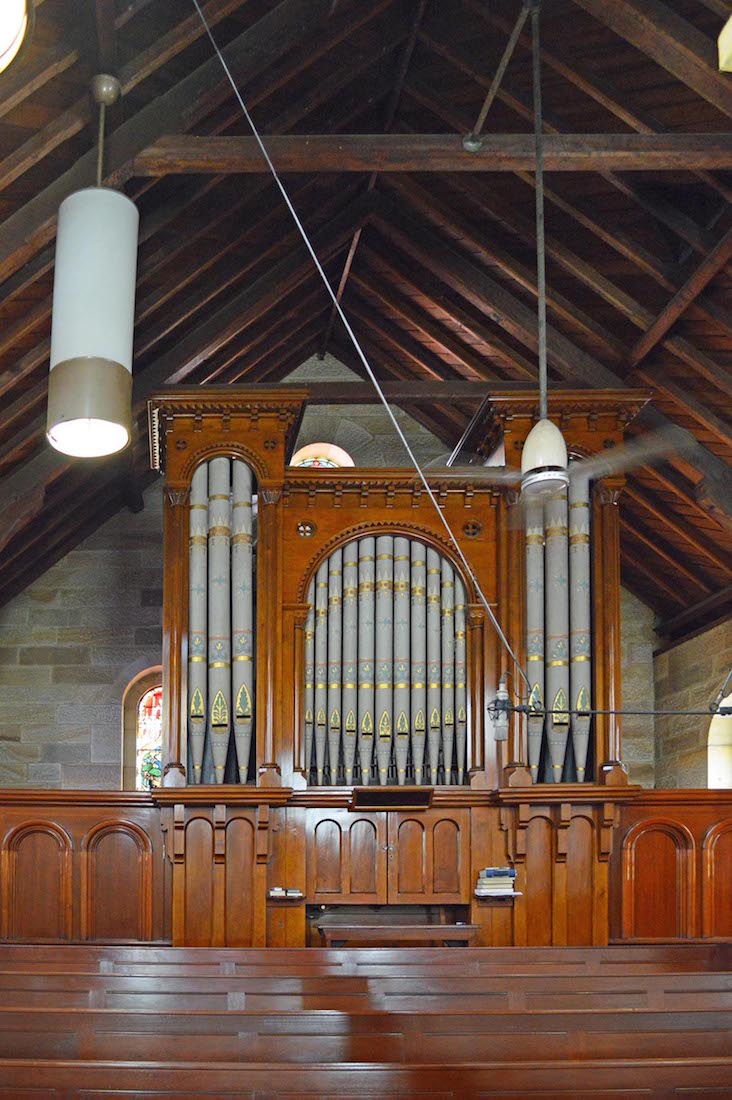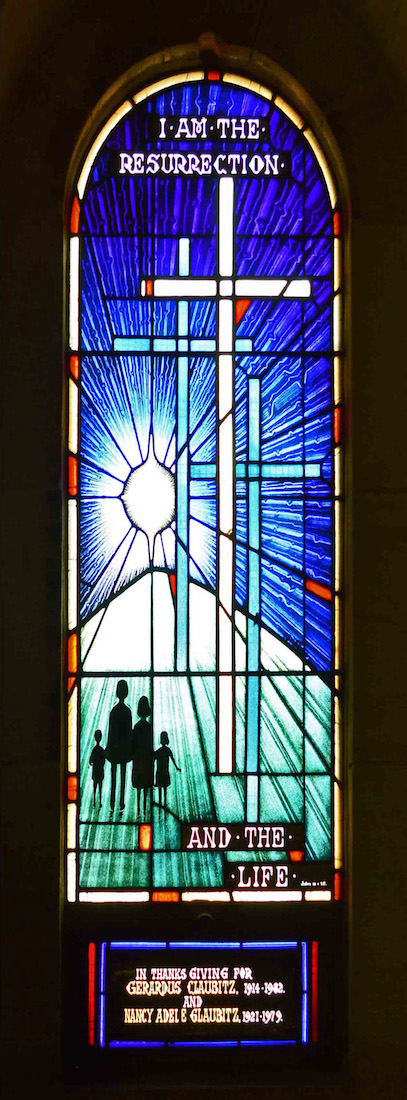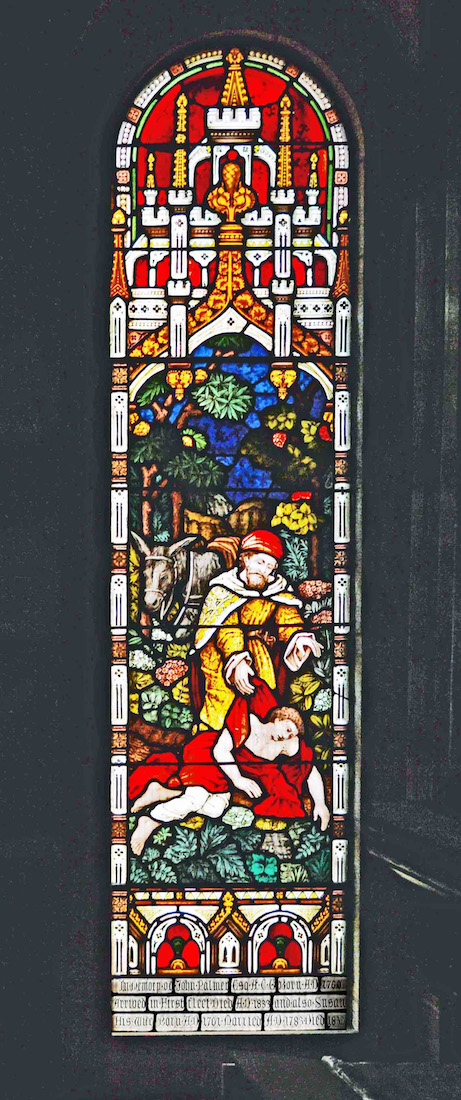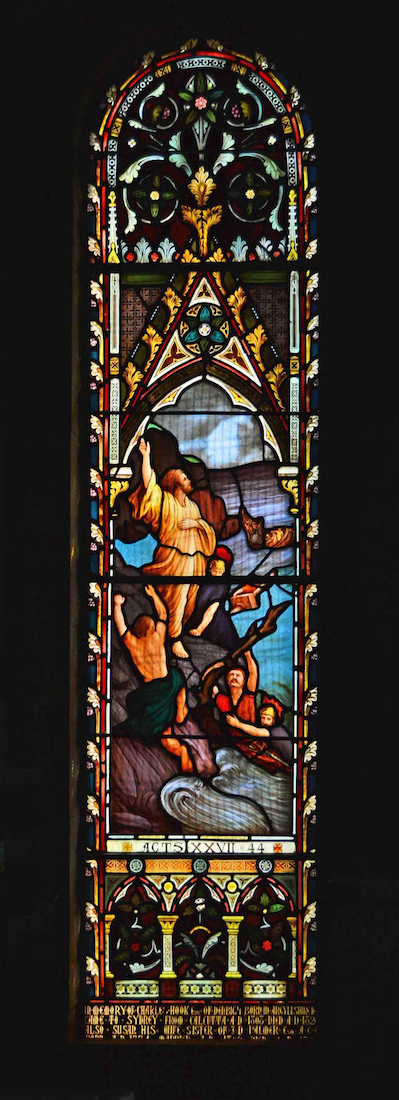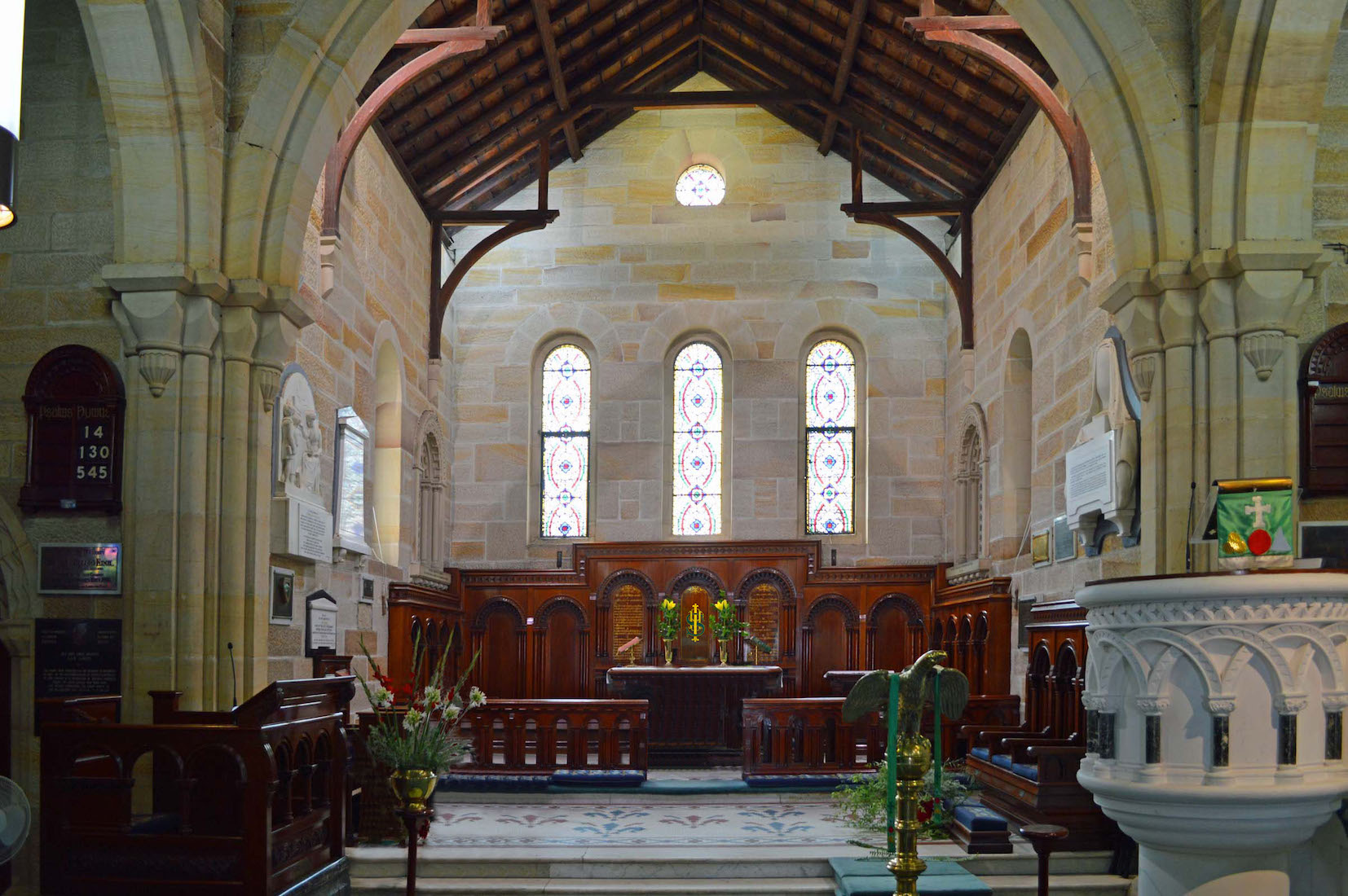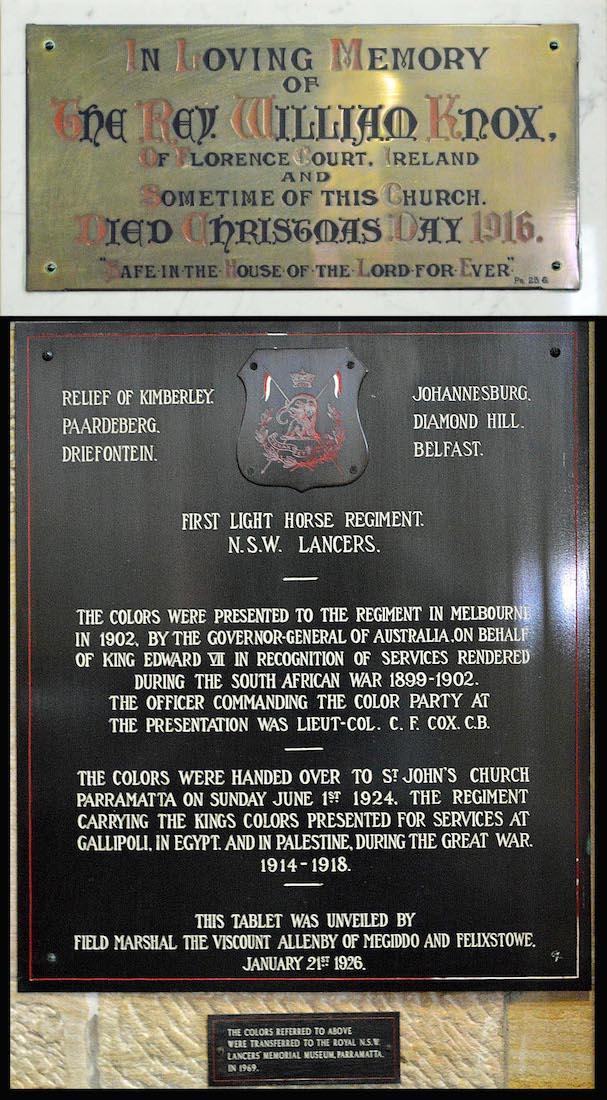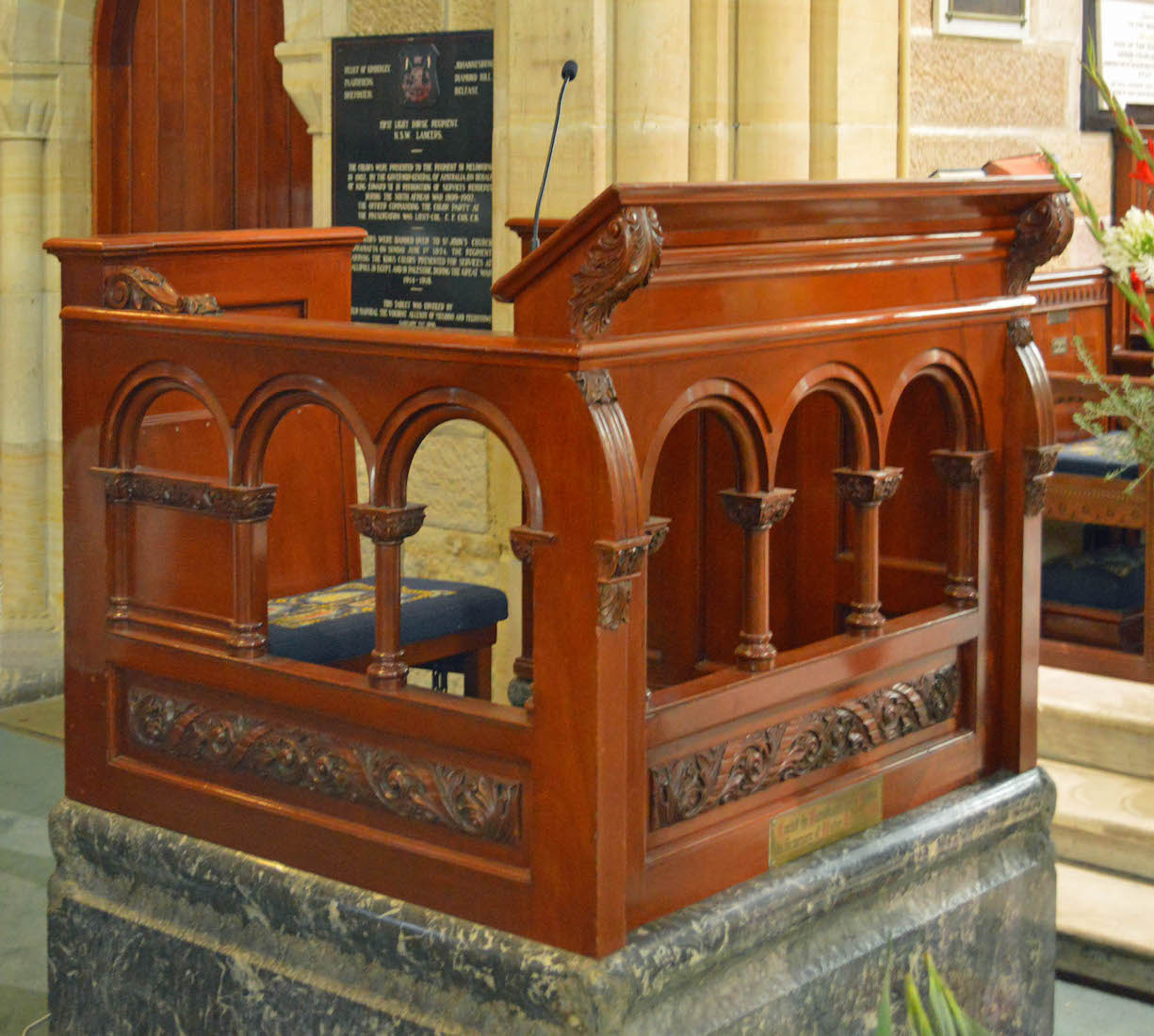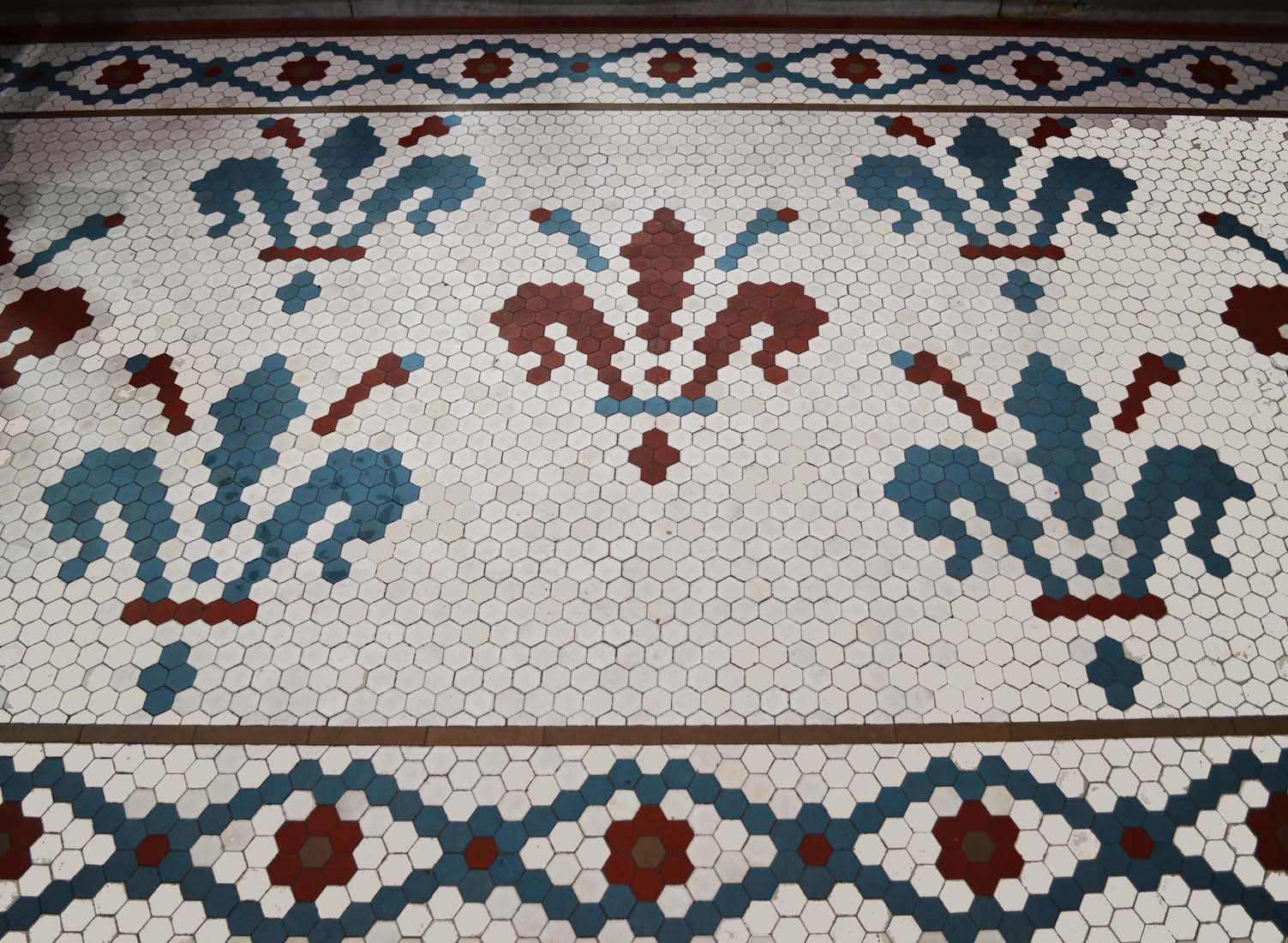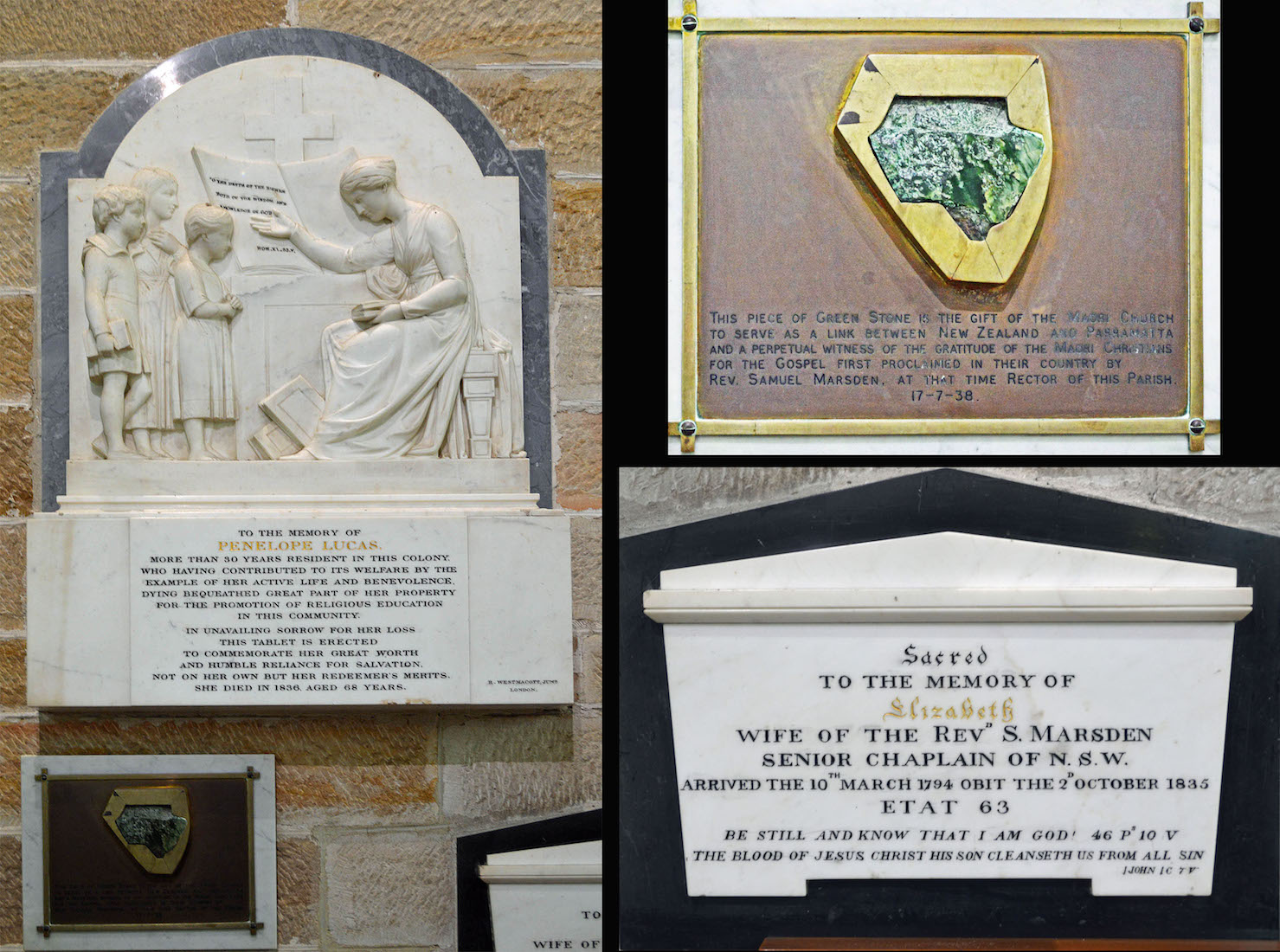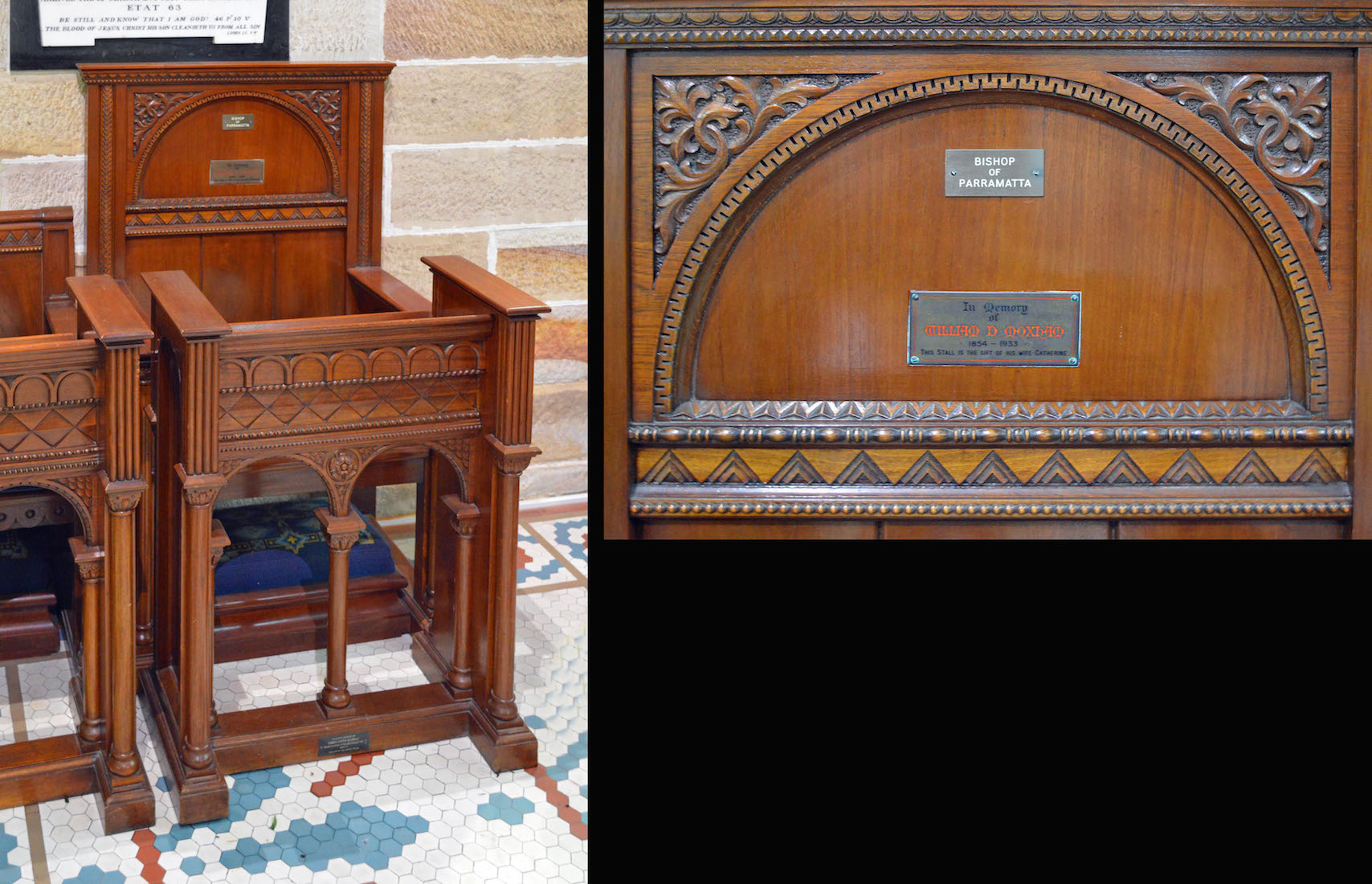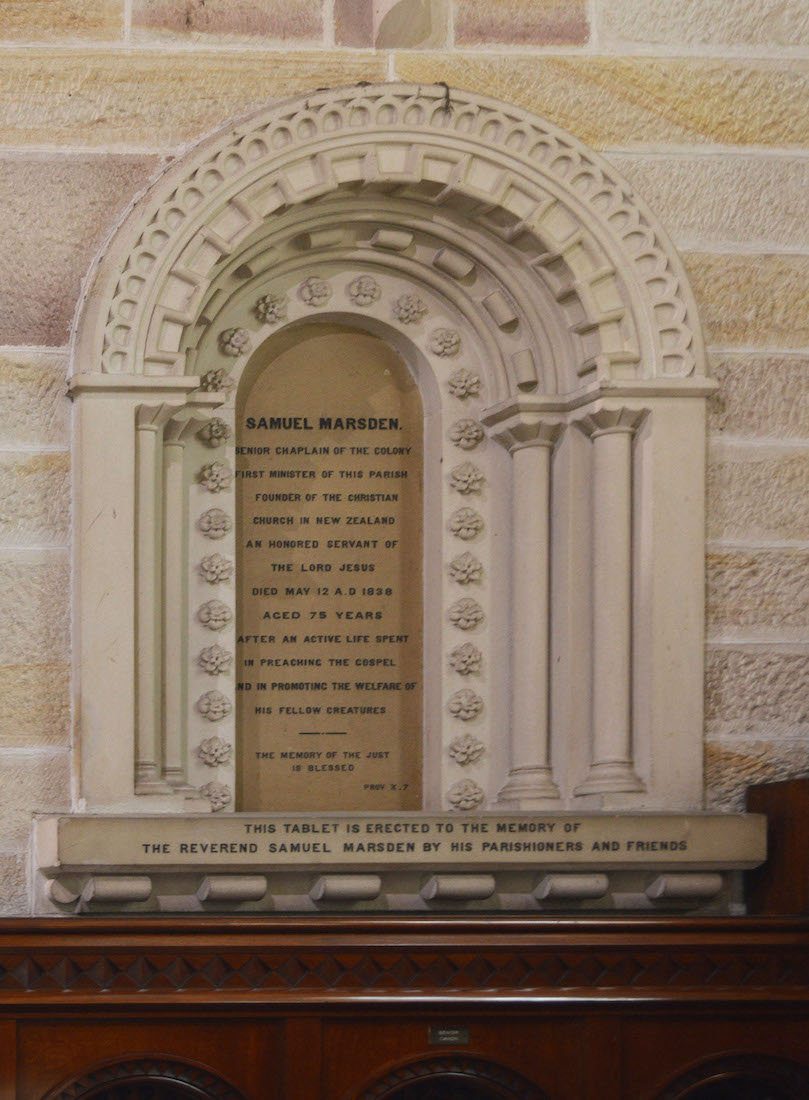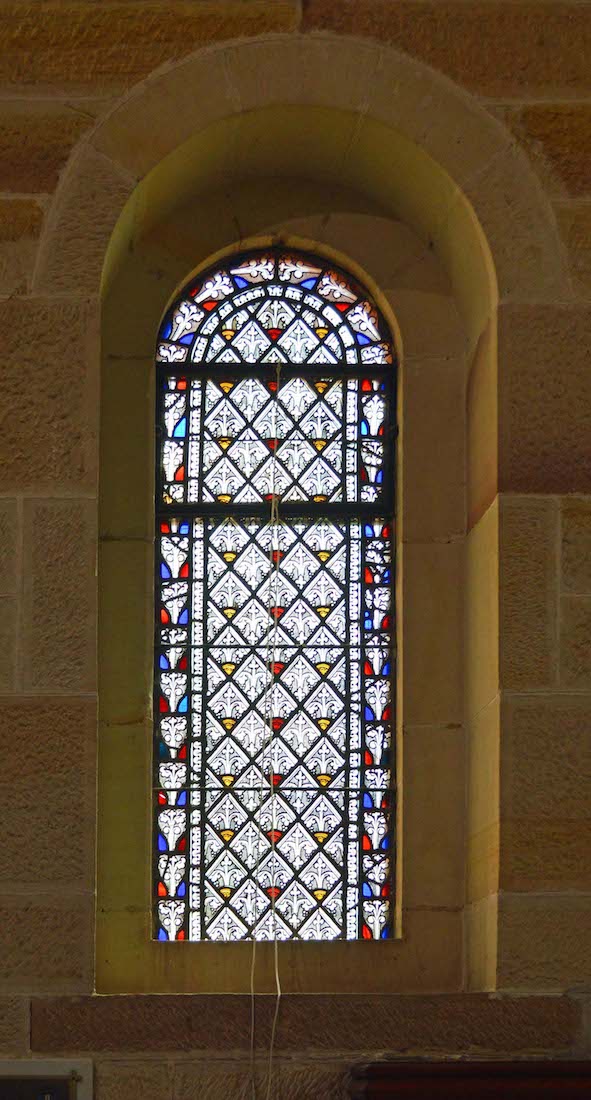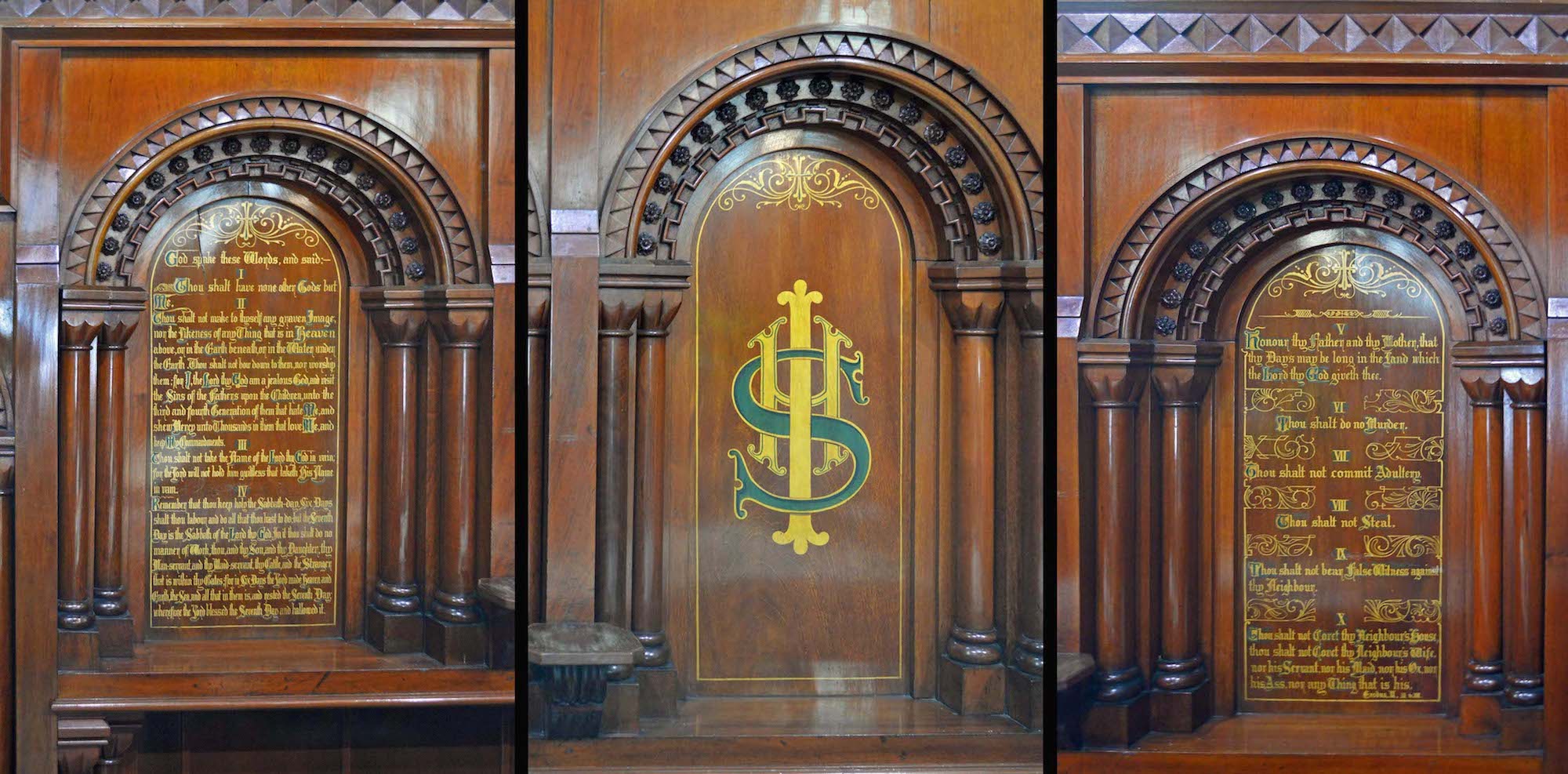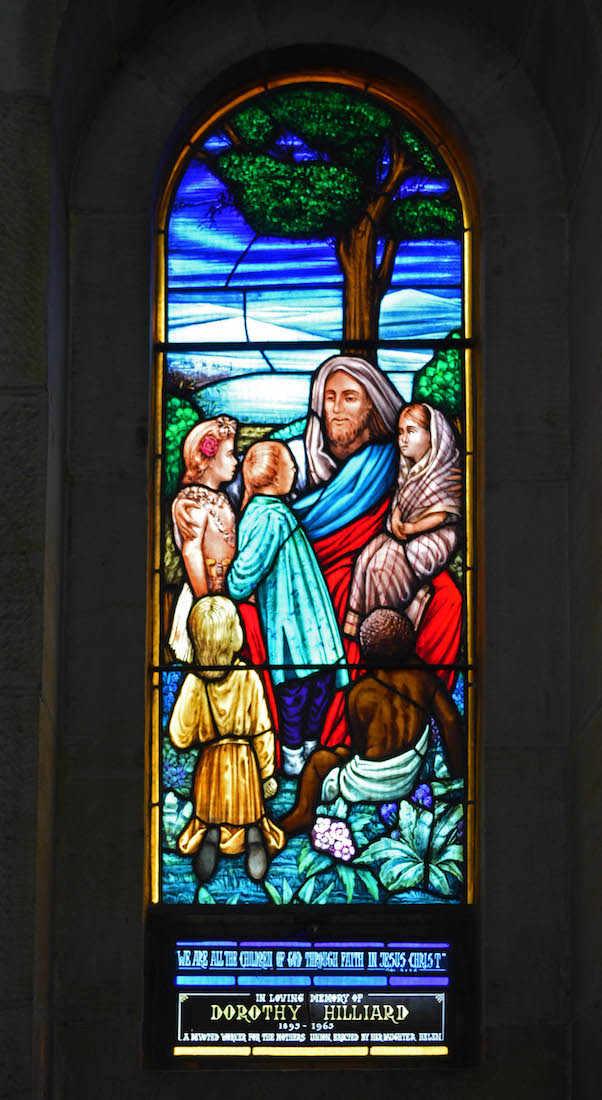
The second window along the nave North wall depicts Jesus with a group of children. At the bottom is a script: We are all the children of God through faith in Jesus Christ. This is almost Galations 3:26. The window was given in loving memory of Dorothy Hilliard 1895 – 1963. A devoted worker for the Mothers’ Union. Erected by her daughter Helen. PLAN
22. PLAQUE, TABLET
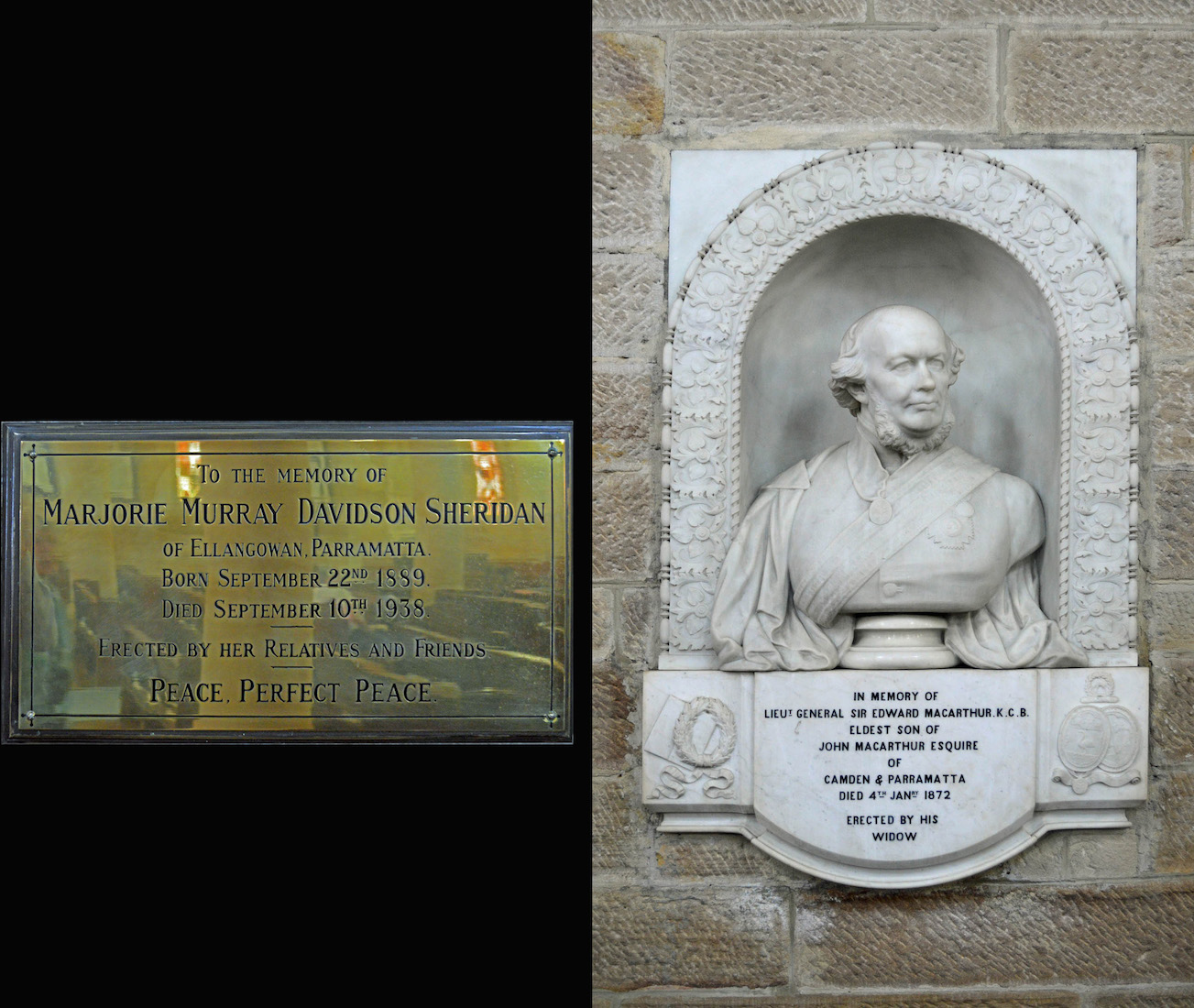
The brass plaque at left is in memory of Marjorie Murray Davidson Sheridan of Ellangowa, Parramatta who lived 1889 – 1938. It is interesting that the plaque gives no personal information about her. She appears on the Parramatta Electoral Rolls for the years 1930 – 1936. In contrast, the life of Edward Macarthur is well documented. Sir Edward Macarthur KCB, who lived 16 March 1789 – 4 January 1872, was a lieutenant-general in the British Army, an administrator active in Australia and Commander-in-chief of Her Majesty's forces in Australia from 1855.
23. NORTH WINDOW
The third window along the nave North wall pictures Saint John – an appropriate window for this cathedral. The quill obviously refers to his contributions to our present New Testament. The window was given in memory of Francis John Wickham who died January 30, 1892 aged 61. It was erected by his fellow parishioners.
24. MEMORIALS
These three memorials are for parishioners of this church who were held in high esteem. They are Gordon C B Champion LLB who died in 1945, Emmeline Kate Burnell who died in 1919, and Alexander Ellison Dare who died in 1873. Gordon Champion is also remembered for his public service as First Public Defender in NSW.
25. NORTH TRANSEPT ORGAN
Much of the North transept is taken up with the cathedral organ. This pipe organ was brought from England in 1862 and installed in the Western Gallery in 1863. At that time it was the largest organ in Australia. In 1900 after minor additions, the organ was moved to the North transept. In 1966 it was completely restored. On either side of the organ, high wooden panelling restricts access, making it difficult to view the four transept windows beyond.
26. NORTH TRANSEPT WINDOW 1
We now reach the North transept. As we round the corner, immediately on our left is this window – a modern representation of Jesus as the Light of the world (John 8:12). Unusually, this window has no words of attribution.
27. NORTH TRANSEPT WINDOW 2
This is the second window on the West wall of the North transept. (I obtained access by asking the welcomer nicely.) Similar in style to the Light of the World window, this window proclaims that Jesus is the Resurrection and the Life. The window is given as a memorial to Gerardus Glaubitz (1914 – 1982) and Nancy Adele Glaubitz (1921 – 1979).
28. NORTH TRANSEPT WINDOW 3
The windows on the North wall of this transept are very interesting and can be viewed over the panelling (photographed!) by standing on a chair. This window shows the Good Samaritan. It is full of colour and detail. The text at the base reads: ‘In memory of John Palmer Esq. A.C.C. Born AD 1760. Arrived in First Fleet. Died AD 1833. And also Susan his wife. Born AD 1761. Married AD 1783. Died 1832.’
29. NORTH TRANSEPT WINDOW 4
The Eastern window of the transept is quite different in style and character. It illustrates Acts 27:44 which tells of how the Apostle Paul is shipwrecked on his voyage to Rome. The window is given: ‘In memory of Charles Hook Esq. of Denb[e]igh. Born in Argyllshire. He came to Sydney from Calcutta AD 1808. Died AD 1828. Also Susan his wife, sister of J. D. Palmer Esq. A.C.C. Born AD 1774 Married AD 1806 Died AD 1836.’
30. NORTH TRANSEPT WINDOW 5
There are two windows on the Eastern wall of the North transept. The hidden window is of the older ‘pressed quarry glass’ style: we shall see other examples of these. The window closer to the crossing is the Ruth window shown here. The dedication of this window reads: ‘To the glory of God and in memory of Mary Agnes Moxhall, a regular worshipper in this church. 24.5.1867 – 9.12.1940’.
31. SANCTUARY
Leaving the North transept we move out into the crossing. Here at left we see the prayer desk, to the left of which is the North East porch. There are several plaques beneath the hymn board. At right is the pulpit. There are various items in the sanctuary area which demand our attention too.
32. NORTH SIDE ENTRY PLAQUES
First the plaques by the doorway to the North East porch ... . The Rev. William Knox who died on Christmas Day 1916 is not listed amongst the Rectors of St John’s. The black plaque tells how the colours of the First Light Horse Regiment, NSW Lancers were handed over to St John’s Church, Parramatta on Sunday June 1st 1924. A small plaque below informs us that the Colours were transferred to the Royal NSW Lancers’ Memorial Museum, Parramatta in 1969.
33. PRAYER DESK
This historic prayer desk sits in a corner of the crossing. It appears to be old and must have a history, but rates barely a mention in the Cathedral notes.
34. SANCTUARY TILING
The floor of the sanctuary is tiled with an hexagonal mosaic featuring a fleur de lis design. This lily representation has a long history in Christian art with the three-fold pattern said to represent the Trinity. The design has also taken on a reference to Mary, in association with a verse in the Song of Solomon about ‘a lily amongst thorns’ (Song 2:2).
35. SANCTUARY TABLETS
The memorial at left celebrates the life of Penelope Lucas, who amongst other things, was governess to John Macarthur's daughters. She was the first governess in the Colony. The plaques at right tell of the link between St John’s and the Maoris in New Zealand through Samuel Marsden. Marsden was Senior Chaplain of NSW, Rector of St John’s, and then became a missionary to NZ, preaching the gospel to the Maori people. The valuable piece of greenstone was a gift expressing the gratitude of the Maori people.
36. SANCTARY NORTH WALL
The stone at right comes from Canterbury Cathedral, and was presented to St John’s Church, Parramatta by the Dean and Chapter of Canterbury in AD 1931. The tablet at left remembers Eliza, wife of Lieutenant-Colonel Henry William Greton of the 4th (the King’s Own) Regiment, and daughter of John Blaxland Esquire M.C. Died April 16th 1834 aged 26 years. A glowing tribute follows.
37. CATHEDRA
This is the modest cathedra or Bishop’s Throne. It indicates that St John’s Cathedral Church is the centre of the Bishop’s authority. The Western Region of the Sydney diocese was formed in 1967, and is based in Parramatta. Up until around 1993 the Bishop here was commonly known as the Bishop of Parramatta. The present designation is Bishop of the Western Region. This throne was given in memory of William D. Moxham who lived 1854 – 1933. It was a gift of his wife Catherine.
38. SANCTUARY NORTH MEMORIAL
The memorial is to Samuel Marsden, first chaplain of the Colony, first minister of this church, and founder of the Christian church in New Zealand. He died in 1838.
39. SANCTUARY NORTH WINDOW
The front side windows of the Sanctuary date from the building of the present church in 1855. The term ‘pressed quarry glass’ comes from the French quarree meaning squared or diamond shaped. The pattern on the glass is pressed while the glass is still molten and has been poured into a mould. A number of these original windows still remain. They were supplied as part of a requisition sent out in 1856, and were manufactured by Powells of Whitefriars of London.
40. SANCTUARY PANELS
These three panels serve as the reredos behind the altar. The outer panels bear the text of the Ten Commandments. The central panel depicts the IHS symbol which comes from the Latinized form of the name ‘Jesus’ in Greek – emphasizing the centrality of Christ in Cathedral worship.


